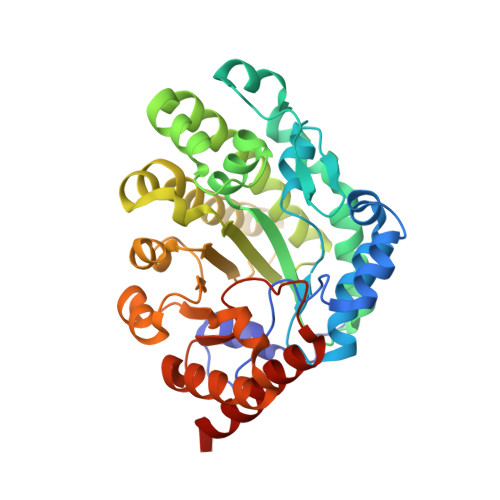Two novel uroporphyrinogen decarboxylase (URO-D) mutations causing hepatoerythropoietic porphyria (HEP).
Phillips, J.D., Whitby, F.G., Stadtmueller, B.M., Edwards, C.Q., Hill, C.P., Kushner, J.P.(2007) Transl Res 149: 85-91
- PubMed: 17240319
- DOI: https://doi.org/10.1016/j.trsl.2006.08.006
- Primary Citation of Related Structures:
2Q6Z, 2Q71 - PubMed Abstract:
Hepatoerythropoietic porphyria (HEP) is a rare form of porphyria in humans. The disorder is caused by homozygosity or compound heterozygosity for mutations of the uroporphyrinogen decarboxylase (URO-D) gene. Subnormal URO-D activity results in accumulation of uroporphyrin in the liver, which ultimately mediates the photosensitivity that clinically characterizes HEP. Two previously undescribed URO-D mutations found in a 2-year-old Caucasian boy with HEP, a maternal nonsense mutation (Gln71Stop), and a paternal missense mutation (Gly168Arg) are reported here. Recombinant Gly168Arg URO-D retained 65% of wild-type URO-D activity and studies in Epstein-Barr Virus (EBV)-transformed lymphoblasts indicated that protein levels are reduced, suggesting that the mutant protein might be subjected to accelerated turnover. The crystal structure of Gly168Arg was determined both as the apo-enzyme and with the reaction product bound. These studies revealed little distortion of the active site, but a loop containing residues 167-172 was displaced, possibly indicating small changes in the catalytic geometry or in substrate binding or increased accessibility to a cellular proteolytic pathway. A second pregnancy occurred in this family, and in utero genotyping revealed a fetus heterozygous for the maternal nonsense mutation (URO-D genotype WT/Gln71Stop). A healthy infant was born with no clinical evidence of porphyria.
Organizational Affiliation:
Department of Medicine, University of Utah School of Medicine, Salt Lake City, UT 84132, USA. john.phillips@hsc.utah.edu














